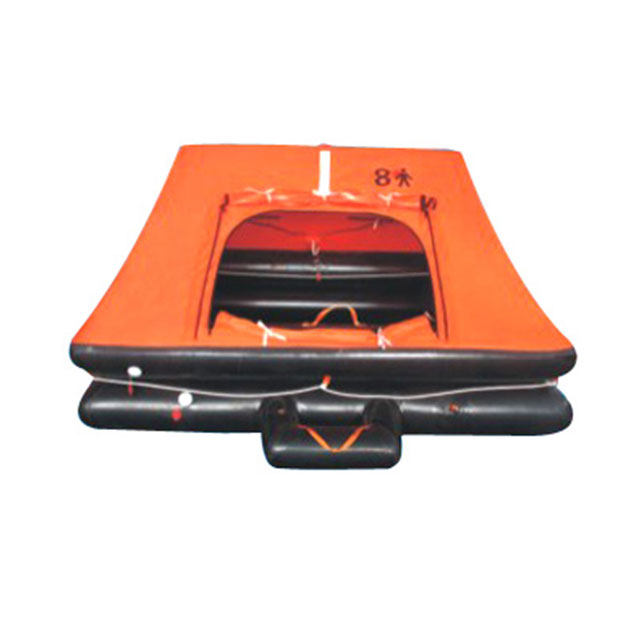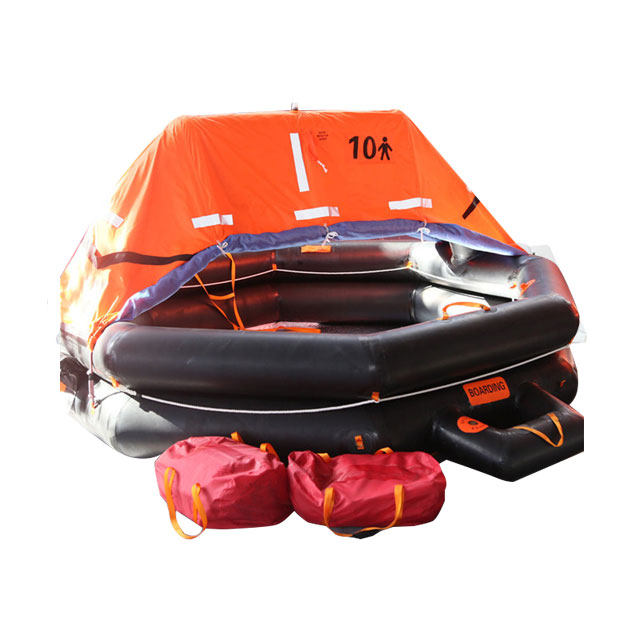Inflatable life rafts hold a pivotal role in maritime safety, serving as vital equipment that has, over time, rescued numerous lives during emergencies at sea. Whether during disasters, accidents, or any situation demanding the urgent evacuation of a vessel, these versatile and buoyant devices offer a lifeline for those in need. This article delves into the significance, design, deployment, and maintenance of inflatable life rafts, underscoring their critical role in maritime safety.

The Importance of Inflatable Life Rafts
In the unforgiving realm of the open sea, where conditions can swiftly shift and catch sailors off guard, having a reliable means of survival is of paramount importance. Inflatable life rafts serve as the ultimate safeguard, offering a safe refuge for mariners when their vessel is no longer seaworthy. These rafts are meticulously designed to keep occupants afloat, shielded from the elements, and visible to potential rescuers until help arrives.
Key Design Features of Inflatable Life Rafts
The effectiveness and safety of inflatable life rafts hinge on several critical design elements, each meticulously crafted to ensure the raft's ability to provide a safe haven:
Buoyancy and Materials
Buoyancy: Inflatable life rafts are crafted to provide buoyancy, enabling them to remain afloat even in turbulent seas. Buoyancy is achieved through the use of buoyant materials and compartments.
Materials: The materials employed in the construction of life rafts are meticulously selected for their buoyancy and durability. Common materials include rubberized textiles and synthetics that resist water absorption.
Self-Inflation Mechanism
Automatic Inflation: Modern inflatable life rafts feature automatic inflation mechanisms. Devices like hydraulic release units (HRUs) or automatic inflation devices (AIDs) activate upon deployment in water. This rapid inflation, without the need for manual intervention, is crucial for swift deployment in emergencies.
Stability: Life rafts are engineered to maintain stability in water, preventing tipping or capsizing even in rough seas. This stability is vital for occupant safety and comfort.
Ballast Bags: Some life rafts are equipped with ballast bags or pockets that enhance stability by adding weight to the raft's bottom.
Canopies or Covers: Inflatable life rafts typically feature canopies or covers to provide shelter from the elements. These protective coverings shield occupants from sun, rain, wind, and spray, mitigating exposure-related concerns.
Insulated Floors: Certain types of life rafts come with insulated floors that help minimize heat loss to the chilly water beneath, maintaining a comfortable temperature within the raft.
Safety Equipment
Safety Essentials: Inflatable life rafts are equipped with essential safety gear, including maneuvering paddles or oars, signaling devices like flares or lights for attracting attention, and first aid kits to address injuries.
Survival Instructions: Many life rafts have survival instructions printed on their inner walls, guiding occupants in the use of survival equipment and procedures.
Visibility and Rescue Aids
Reflective Materials: Reflective materials are often incorporated into the design to enhance the raft's visibility, particularly at night or in low-light conditions.
Sea Anchor: Some life rafts include sea anchors, which serve to stabilize and orient the raft, making it easier for search and rescue teams to locate.
Occupant Capacity
Inflatable life rafts are constructed to accommodate a specific number of individuals, determined by factors such as size, buoyancy, and safety regulations.
Packaging and Deployment
Life rafts are often compactly packed to minimize space on vessels. They are designed for swift and efficient deployment during emergencies, minimizing delays.

Deployment and Use of Inflatable Life Rafts
Proper deployment and usage of inflatable life rafts are crucial components of maritime safety. Knowing how to deploy and utilize these lifesaving devices correctly can make the difference between survival and catastrophe during a maritime crisis:
1. Recognize the Emergency: It is imperative to assess the severity of the situation and the need to abandon the vessel in the event of a maritime disaster, such as shipwrecks, collisions, or sinking.
2. Locate and Access the Life Raft: Inflatable life rafts are typically stored in designated locations on board vessels. Familiarizing oneself with their locations in advance is vital. Follow the vessel's abandonment procedures and remove any securing straps or coverings to access the life raft.
3. Release Mechanism Activation: Depending on the type of life raft and the vessel's equipment, activate the release mechanism to deploy the life raft. This mechanism may be activated manually or automatically upon submersion in water. Ensure it deploys accurately and swiftly.
4. Life Raft Inflation: If the life raft is equipped with an automatic inflation system, it will inflate rapidly upon deployment in the water. Verify that it inflates completely and correctly. In the case of manually inflatable life rafts, locate and use the inflation mechanism as instructed, typically involving pulling a cord or manually inflating a compressed gas cylinder.
5. Boarding the Life Raft: Exercise caution when approaching the inflatable life raft. Pay close attention to the raft's stability to prevent capsizing or damage. Board the raft carefully to prevent overturning, maintaining a balanced distribution of weight within the raft.
6. Occupant Safety and Equipment: Once inside the life raft, account for all occupants and ensure they are securely seated. Familiarize yourself with the safety equipment available within the raft, such as paddles, flares, first aid kits, and other survival gear. Follow the provided instructions for utilizing safety equipment, using signaling devices to increase visibility to potential rescuers.
7. Maintain the Raft: Stay inside the life raft and refrain from re-entering the water unless directed by rescue personnel or under extreme circumstances. Utilize the canopy or cover to protect the raft from the elements.
8. Communication and Signaling: If communication devices such as radios or emergency beacons are available, use them to alert authorities or nearby vessels of your location. Periodically activate and monitor signaling devices like flares or lights to enhance visibility to potential rescuers.
9. Stay Calm and Await Rescue: In an emergency situation, maintaining composure is essential. Panic can lead to poor decision-making. Patiently await rescue while adhering to safety protocols, retaining hope and confidence in the rescue process.
10. Follow Rescue Procedures: Upon the arrival of rescue personnel or another vessel, cooperate fully with their instructions and procedures for a safe recovery.
Maintenance and Inspection of Inflatable Life Rafts
Regular maintenance and inspection are imperative to ensure the reliability of inflatable life rafts during emergencies:
Inspection Intervals: Life rafts should undergo routine inspections as per maritime regulations and the manufacturer's recommendations. These inspections encompass checking for leaks, examining the inflating system, and verifying the operational status of all safety equipment.
Professional Servicing: Skilled specialists should service life rafts regularly. This entails inspections and rectification of any issues. Repacking the raft is often part of the servicing process to ensure proper inflation.
Conclusion
Inflatable life rafts represent indispensable safety assets on vessels of all types, serving as lifelines for mariners in times of emergency at sea. Their buoyancy and stability make them essential tools for survival and rescue. Proper maintenance and familiarity with deployment procedures are critical to ensuring that these lifesaving devices perform reliably when needed most.










Comments (0)